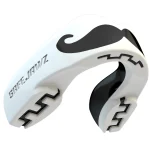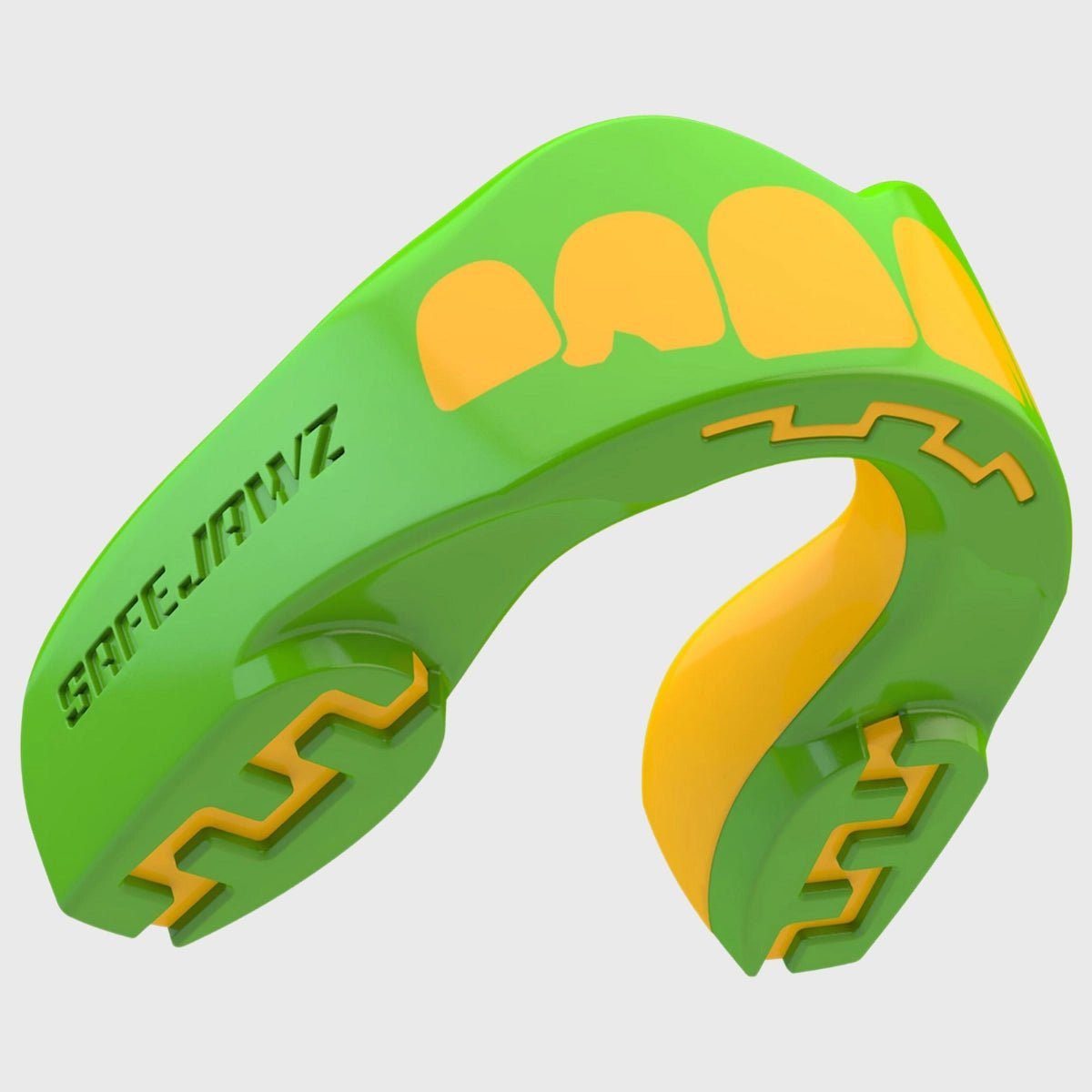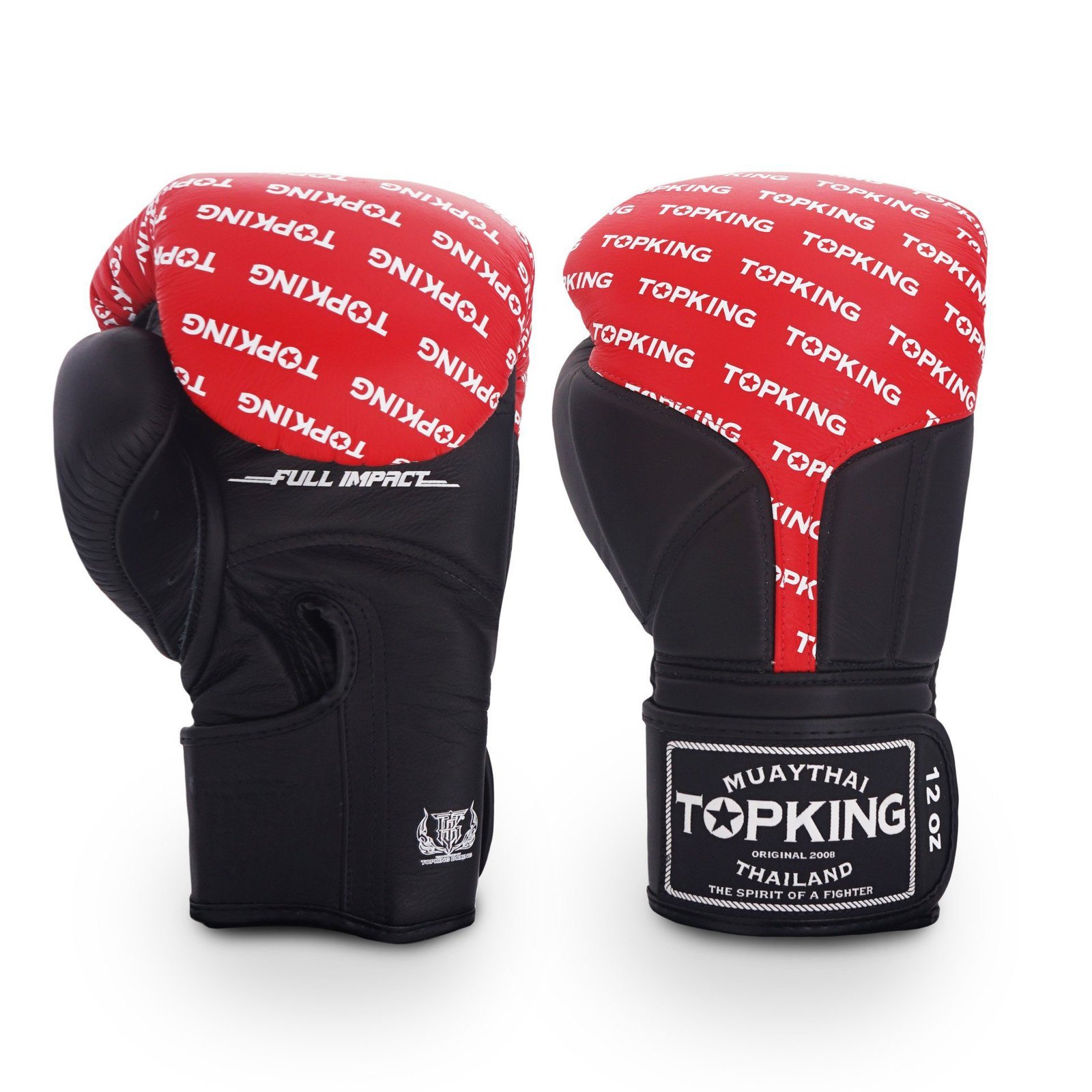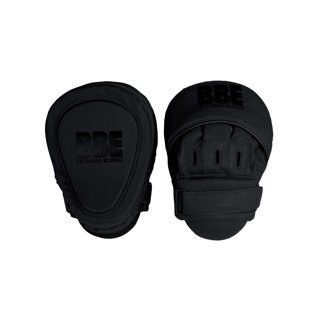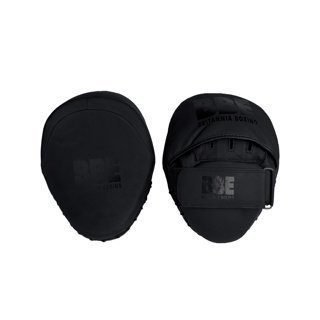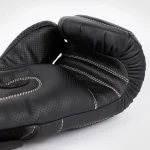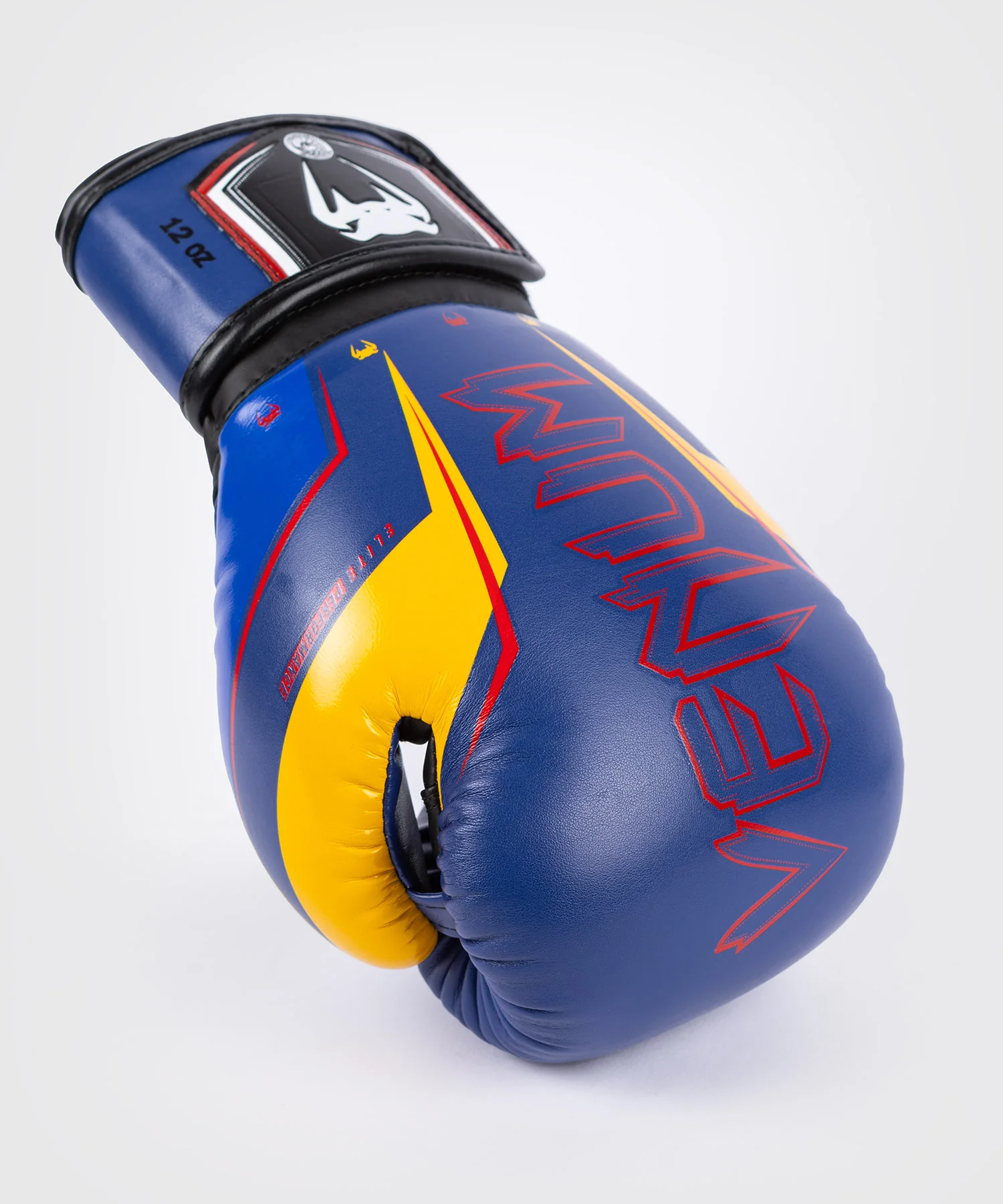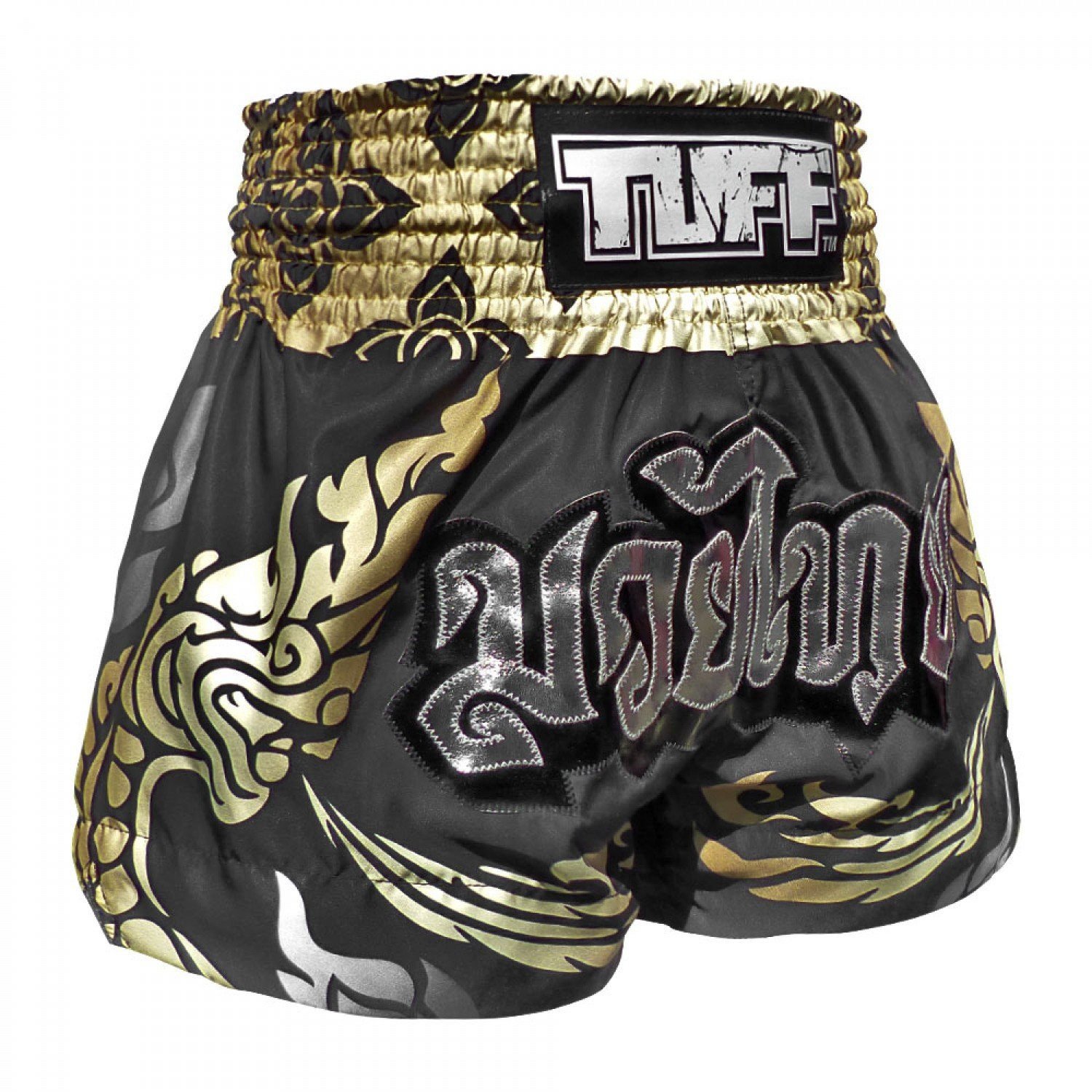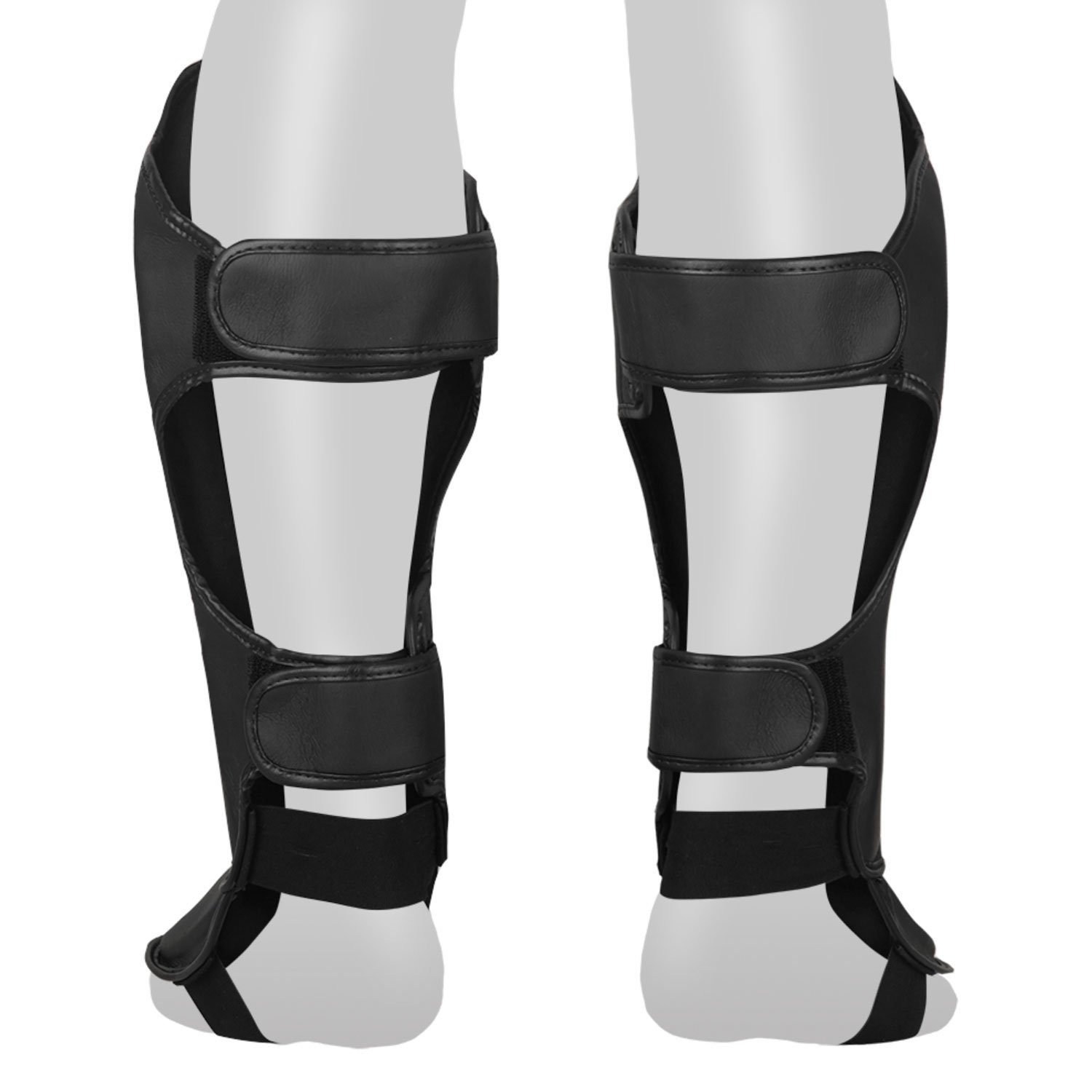Skipping Rope (Jump Rope)
Jump rope is a classic boxing exercise that improves footwork, coordination, and cardiovascular endurance. It involves jumping over a rope while continuously moving your feet in a skipping motion. This exercise helps develop calf muscles, improves foot speed, and enhances rhythm. Skipping rope is an efficient calorie-burning workout that can be done virtually anywhere.
Shadowboxing
Shadowboxing is a solo exercise where a boxer moves and throws punches without an opponent. It helps refine boxing techniques, footwork, and hand-eye coordination. Additionally, shadowboxing is an excellent way to build endurance and practise various combinations and defensive moves.
Heavy Bag Training
Heavy bag training involves striking a weighted bag using different punches and combinations. It builds upper body strength, power, and improves overall boxing technique. The heavy bag absorbs the impact of punches, making it a satisfying stress-relieving workout.
Focus Mitts and Thai Pads
Focus mitts and Thai pads are used in partner training sessions. One partner holds the pads while the other throws punches and kicks. This drill simulates real-life scenarios, improves accuracy, and enhances timing and power. It also promotes communication and teamwork, making it a fun and interactive workout.
Boxing Classes and Group Training Benefits of Group Training
Participating in boxing classes and group training offers several advantages. Firstly, the camaraderie and group support create a motivating and encouraging atmosphere. Group training sessions provide a sense of community and accountability, inspiring participants to push themselves further. Instructors can tailor workouts to suit the group’s fitness levels, ensuring that everyone gets a challenging yet safe experience. Additionally, group training fosters healthy competition and teamwork, making the workout more enjoyable and engaging.
Boxing as a Stress-Relief Activity
Boxing is not only a highly effective physical workout but also a fantastic stress-relief activity. The intense physical exertion in boxing releases endorphins, which are natural mood enhancers. Punching a heavy bag or pads can act as a powerful outlet for pent-up stress and frustration. The combination of physical exertion and focus required in boxing allows individuals to temporarily escape from their worries and immerse themselves in the training session. Moreover, the mental focus and discipline required in boxing can help calm the mind and reduce anxiety.
Boxing for fitness and recreation provides numerous benefits for both physical and mental well-being. From improving cardiovascular health to enhancing strength and coordination, boxing exercises offer a diverse range of fitness benefits. Participating in group training sessions fosters a supportive and motivational environment. Additionally, boxing serves as a stress-relief activity, allowing individuals to release tension and experience a sense of liberation. Whether in traditional boxing or Muay Thai, boxing’s versatility and effectiveness make it an enjoyable and rewarding fitness activity for people of all fitness levels.
Questions and Answers: Boxing and Muay Thai Boxing Will boxing get me in shape?
Boxing is an excellent way to improve your overall fitness and can certainly help you get in shape. Here’s how:
Cardiovascular Fitness
Boxing involves a lot of aerobic activity, such as jumping rope and shadowboxing. These activities can improve your cardiovascular fitness, increase your stamina, and help you burn calories.
Strength Training
Boxing workouts often include bodyweight exercises like push-ups, sit-ups, and burpees. Over time, these exercises can help build and tone muscles, especially in your arms, shoulders, and core.
Improved Coordination
Boxing requires precise coordination between your hands, eyes, and footwork. This can enhance your overall motor skills and agility.
Weight Loss
The intense workouts associated with boxing can lead to weight loss, as they burn a significant number of calories. Combined with a proper diet, boxing can help you shed unwanted pounds.
Increased Muscle Endurance
Boxing involves repetitive movements that can increase muscle endurance. This means your muscles will be able to perform for longer periods before becoming fatigued.
Will boxing help me to build muscle mass?
Whether or not Muay Thai boxing or standard boxing will help you build significant muscle mass will depends on various factors:
Resistance Training
While boxing provides resistance through punching, it may not be sufficient for significant muscle hypertrophy (growth). Many boxers complement their training with additional resistance exercises, such as weightlifting, to build muscle.
Diet
Building muscle also depends on your dietary intake, particularly your protein intake. To promote muscle growth, you should consume enough protein, calories, and other essential nutrients.
Genetics
Genetics play a role in how easily individuals build muscle. Some people naturally have a greater propensity for muscle growth than others.
In summary, boxing can improve your overall fitness, including cardiovascular health, muscle endurance, and strength. While it can contribute to muscle development, significant muscle mass gain typically requires a combination of resistance training, proper nutrition, and genetics. If your goal is primarily muscle building, you may want to incorporate additional strength training exercises into your regimen.
What are the benefits of Muay Thai boxing?
Muay Thai boxing, as you learnt earlier on in our guide, is also known as the “Art of Eight Limbs” and it is a combat sport as well as a martial art that originated in Thailand many years ago. It offers a range of physical, mental and self-defence benefits to you if you can master the sport. Here are some of the key advantages of practising Muay Thai:
Full-Body Workout
Muay Thai engages nearly every muscle group in the body. Kicks, punches, elbows, and knees are all used, providing an intense full-body workout that helps improve strength and endurance.
Cardiovascular Conditioning
Muay Thai is known for its rigorous training sessions, which include skipping, shadowboxing, and intense bag work. This enhances cardiovascular fitness, boosting stamina and endurance.
Weight Loss
The high-intensity nature of Muay Thai training burns a significant number of calories, making it an effective way to lose weight and maintain a healthy body composition.
Improved Flexibility
The dynamic movements in Muay Thai require a good range of motion. Practising Muay Thai can lead to improved flexibility and joint mobility.
Mental Discipline
Muay Thai emphasises discipline, focus, and mental fortitude. Training in this martial art can help you develop mental toughness, concentration, and the ability to stay calm under pressure.
Self-Defence Skills
Muay Thai is a practical form of self-defence. You’ll learn techniques for defending yourself and dealing with potential threats effectively.
Stress Relief
Engaging in intense physical activity can help reduce stress and release endorphins, leading to improved mental well-being.
Increased Confidence
As you gain proficiency in Muay Thai and see improvements in your physical abilities, your self-confidence and self-esteem can receive a significant boost.
Cultural Understanding
Muay Thai is deeply rooted in Thai culture and history. Practising it can provide you with insights into Thai traditions and values.
Community and Camaraderie
Muay Thai gyms often foster a sense of community and camaraderie among practitioners. You’ll have the opportunity to train with like-minded individuals and build strong social connections.
Competition
For those who enjoy competition, Muay Thai offers the opportunity to participate in amateur or professional bouts and test your skills in a controlled environment.
Improved Reflexes
The fast-paced nature of Muay Thai training enhances your reflexes and reaction times, which can be beneficial in various aspects of life.
It’s important to note that while Muay Thai offers numerous benefits, it’s also a physically demanding and contact-oriented sport. It’s crucial to train under the guidance of experienced instructors and prioritise safety to minimise the risk of injuries. Additionally, the benefits you experience will depend on the effort and dedication you put into your training.
Are Muay Thai gloves and boxing gloves the same? Padding Distribution Muay Thai Gloves
Muay Thai gloves typically have less padding on the front knuckle area compared to boxing gloves. This design allows Muay Thai practitioners to grip and grapple more effectively since they often clinch and use their hands to control their opponents.
Boxing Gloves
Boxing gloves, on the other hand, have more padding over the knuckles to provide extra protection during punches. The additional padding is crucial in boxing to reduce the risk of hand injuries.
Thumb Attachment Muay Thai Gloves
Muay Thai gloves often have an attached thumb, which prevents the thumb from moving independently. This design helps protect the thumb from accidental hyperextension and eye pokes.
Boxing Gloves
Boxing gloves usually have a separated thumb, allowing for better fist formation when punching. The separated thumb design is optimised for boxing techniques.
Cuff Length Muay Thai Gloves
Muay Thai gloves tend to have a longer cuff that covers the wrist more extensively. This design supports the wrist during clinches and when blocking kicks.
Boxing Gloves
Boxing gloves typically have a shorter cuff, as the sport doesn’t involve clinching or defending against kicks. The shorter cuff allows for more wrist flexibility and wrist movement during punches.
Weight and Size Options
Both Muay Thai and boxing gloves come in various weights and sizes to accommodate different training needs and hand sizes. However, the choice of glove weight can vary slightly between the two sports based on personal preferences and training goals.
It’s worth noting that while Muay Thai gloves are specifically designed for Muay Thai, some practitioners still use boxing gloves for Muay Thai training, especially for bag work and sparring. The choice between Muay Thai gloves and boxing gloves ultimately depends on your specific training goals and the disciplines you practise. If you are primarily training in one sport, using gloves designed for that sport is recommended to ensure the best fit and protection.
How does Muay Thai Training build muscle?
Muay Thai training can be an effective way to build muscle due to its physically demanding nature and the various components of the training regimen. Here’s how Muay Thai training contributes to muscle development:
Resistance Training
Muay Thai involves striking heavy bags, pads, and sometimes even sparring with partners. These activities require forceful and repetitive muscle contractions, acting as a form of resistance training. Over time, this resistance can lead to muscle hypertrophy (growth).
Bodyweight Exercises
Muay Thai training often includes bodyweight exercises such as push-ups, sit-ups, burpees, and squats. These exercises target different muscle groups and can help build and tone muscles.
Kicking and Knee Strikes
Muay Thai involves powerful kicks and knee strikes, which engage the muscles in the legs, hips, and core. Regular practice of these techniques can lead to increased muscle mass in these areas.
Core Strengthening
The rotational movements in Muay Thai, such as delivering hooks and roundhouse kicks, engage the core muscles. This helps develop a strong and stable core, which is essential for balance and power generation.
Cardiovascular Endurance
Muay Thai training is intense and often includes high-intensity interval training (HIIT) elements. These workouts can lead to fat loss, which can reveal and define underlying muscle.
Increased Repetition
Muay Thai involves many repetitions of techniques during training. These repetitive movements, such as punching and kicking, can lead to muscle endurance and growth, especially in the upper body.
Leg Conditioning
Practising leg kicks and checking kicks (blocking with the shin) can condition the bones and muscles in the legs, leading to increased muscle size and density.
Balanced Muscle Development
Muay Thai training engages both the upper and lower body, leading to balanced muscle development throughout the body.
It’s important to note that the extent of muscle development in Muay Thai can vary from person to person and depends on factors like training intensity, frequency, nutrition, genetics, and recovery. To maximise muscle growth, individuals may complement their Muay Thai training with additional resistance and strength training exercises. Additionally, proper nutrition, including adequate protein intake, is crucial for muscle development and recovery.
Remember that Muay Thai training primarily focuses on martial arts skills, fitness, and overall conditioning, and muscle growth is a natural outcome of the intense and varied workouts involved in this discipline.
Why do Muay Thai boxers make sounds?
Exhalation and Breath Control
Making sounds while striking or exerting effort helps with breath control. It’s essential to exhale forcefully during strikes to increase power and prevent the build-up of tension in the body. The sound made during exhalation signifies that the fighter is breathing out, ensuring that they don’t hold their breath, which could lead to fatigue or decreased power.
Psychological Focus
The sounds made in Muay Thai, such as grunts or shouts, can serve as a form of psychological focus and intensity. It helps fighters stay mentally engaged and maintain their concentration on the task at hand. These sounds can also be intimidating to opponents, potentially disrupting their concentration.
Enhanced Striking Power
Making a sound while striking can coincide with the moment of impact, helping fighters synchronise their breath with the release of energy, which can result in more powerful strikes.
Release of Tension
Muay Thai involves high levels of physical and mental tension. Making sounds can serve as a release valve for this tension, helping fighters stay loose and relaxed during their movements.
Tradition and Culture
Making sounds during martial arts practice is often deeply rooted in tradition and culture. In Muay Thai, it can be seen as a way to honour the heritage and history of the sport. It’s also a way for fighters to pay respect to their trainers and the fighters who came before them.
Communication
In training scenarios, Muay Thai fighters may use sounds to communicate with their training partners or coaches. These sounds can indicate when they are ready to strike, block, or clinch, enhancing the flow and safety of training sessions.
Conditioning and Habit
Over time, making sounds becomes a conditioned response for many fighters. They do it automatically as a result of years of training and competition.
It’s important to note that these sounds are not unique to Muay Thai and can be found in various martial arts disciplines. They serve functional, psychological, and cultural purposes within the context of the sport.
What does Muay Thai training look like
Muay Thai training is a comprehensive and physically demanding regimen that focuses on developing the skills, conditioning, and fitness required for the sport of Muay Thai. Training sessions can vary depending on the gym, the level of the participants, and specific goals, but here’s an overview of what Muay Thai training typically includes:
Warm-Up
Training usually begins with a warm-up to prepare the body for the intensity of the session. This may involve light jogging, jumping jacks, or skipping rope to increase heart rate and blood flow.
Shadowboxing
Muay Thai fighters often start with shadowboxing, a solo exercise where they practise striking techniques while visualising an opponent. This helps improve form, footwork, and conditioning.
Bag Work
Heavy bag and Thai pads are commonly used for practising strikes, including punches, kicks, elbows, and knees. Bag work helps improve power, accuracy, and speed.
Pad Work
Muay Thai trainers often hold pads for students to strike. This allows for more interactive training and helps fighters work on combinations and timing.
Clinch Work
Clinching is a unique aspect of Muay Thai, and it involves close-range grappling and striking. Fighters practise clinch techniques, sweeps, and throws with training partners.
Sparring
Controlled sparring sessions provide an opportunity to practice techniques and strategies against a live, resisting opponent. Safety gear, including headgear, mouthguards, and shin guards, is usually worn during sparring.
Conditioning
Muay Thai fighters engage in various conditioning exercises, including bodyweight exercises like push-ups and sit-ups, as well as cardio drills to improve endurance.
Stretching
Stretching at the end of the session helps maintain flexibility and prevent injuries. This may include static stretches and dynamic stretches.
Cool Down
A cool-down period allows the body to gradually return to its resting state. It usually involves light aerobic activity followed by stretching.
Mental Training
Some gyms incorporate mental training, including focus drills, visualisation exercises, and mental toughness training, to help fighters stay composed and focused during matches.
Technical Drills
Fighters work on specific technical drills to refine their skills, such as improving their defensive techniques or perfecting a particular combination.
Strength and Conditioning
Many fighters include strength and conditioning exercises outside of Muay Thai-specific training to build overall strength, power, and endurance.
Muay Thai training can be adapted to suit various fitness levels, from beginners to advanced fighters. It’s essential to have qualified instructors who can provide guidance, correct technique, and ensure safety during training. Training frequency can vary, with some fighters training multiple times a week to prepare for competitions, while others train for fitness and self-defence at a more relaxed pace.






